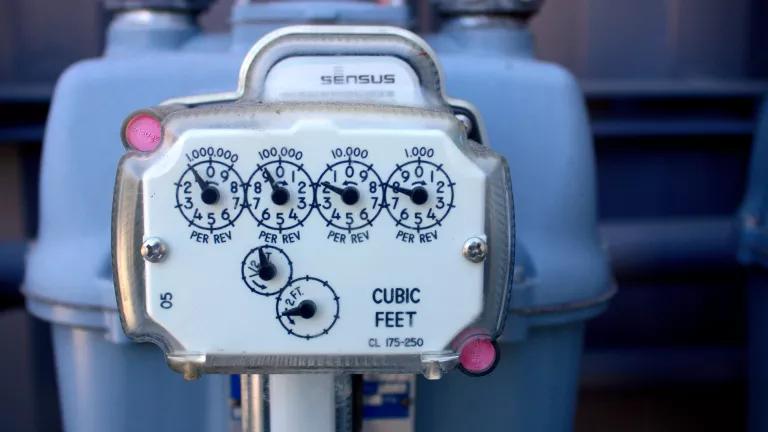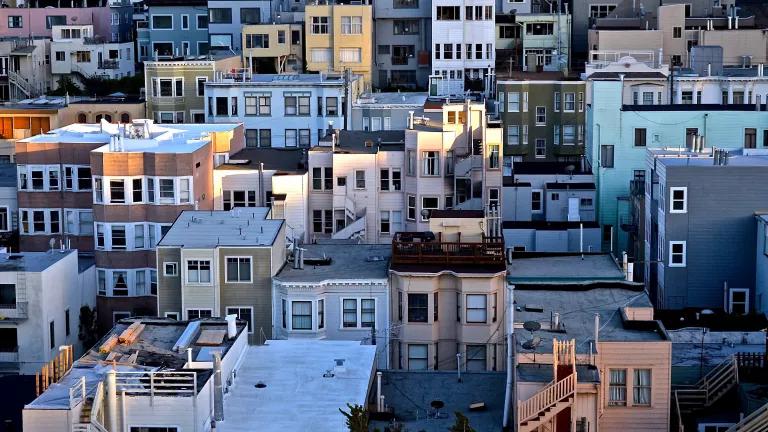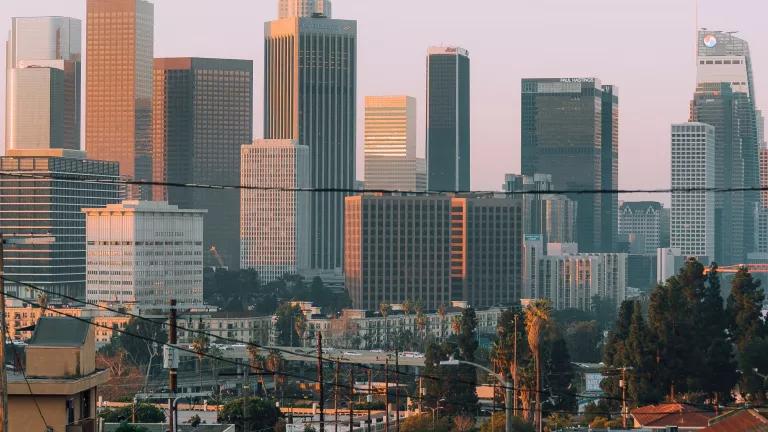Los Angeles Leads in Easing Consumer Utility Debt
The City of Los Angeles is taking action to address crippling debt accumulated by low-income utility customers during the COVID-19 pandemic.

Co-authored by Yeshi Lemma, Los Angeles Alliance for a New Economy (LAANE)
The City of Los Angeles is taking action to address crippling debt accumulated by low-income utility customers during the COVID-19 pandemic. It plans to direct $50 million in COVID relief funds to some customers to cover debt incurred during COVID.
Although the city’s moratorium on water and electricity shut-offs was a crucial first step to maintain Angelenos’ access to water and power during this public health and economic crisis, it is only a temporary measure. Meanwhile, tens of thousands of Angelenos are out of work and unable to pay their bills. Los Angeles County’s unemployment rate peaked at 20.6 percent in May, and though it has declined since then to 15.1 percent, people of color in California have been disproportionately affected by COVID 19-related layoffs.
While 27 percent of the state’s white workers have filed for unemployment insurance since March, 28 percent of Latinx workers and 31 percent of Asian workers have done the same. For Black workers, the number has been a staggering 46 percent. As a result of such disparate unemployment, low-income communities and communities of color will likely experience the heaviest burdens from high utility bills and overdue balances.
But Los Angeles is working to provide relief. The city will use funding from the Coronavirus Aid, Relief, and Economic Security (CARES) Act to fund a Utility Grant program that will provide cash assistance that as many as 100,000 low-income customers can use to pay their water and electricity bills.
The RePower LA Coalition, (more than 30 community, labor, environmental, and environmental justice organizations) called on the Los Angeles Department of Water and Power (LADWP) to begin planning when the moratorium is lifted. Without a plan, a wave of disconnections and debt would be imminent for many low-income Angelenos at a time when water and electricity are more important than ever.
LADWP’s Board of Commissioners and Staff understood the unprecedented opportunity to give Angelenos a fresh start by providing much-needed relief for low-income customers.
Long-term energy burden
While the grant program is a direct response to the pandemic, Angelenos need more innovative solutions to address the longstanding issue of utility debt and “energy burden” for Angelenos. Energy burden, which refers to the total share of income that a household spends on electricity bills, is an issue of racial and economic justice that disproportionately impacted low-income communities and communities of color even before the pandemic.
One study found that the median household energy burden in Los Angeles was 2.75 percent, but 40 percent of Black households and 30 percent of Latinx households paid more than double that amount. During the pandemic, these inequalities have been exacerbated, with 28 percent of Angelenos facing serious problems paying their utility bills.
How is the City taking extra steps to address debt?
Until recently, there was no plan to offer debt relief to low-income customers, many of whom have been accumulating more of it since the pandemic began and they have had to choose between paying for utilities or food and medicine.
LADWP’s Low Income Discount Program (LIDP) and Lifeline programs, which both offer bill discounts to qualifying customers, will not be enough to help households whose financial situations have worsened during the pandemic. Information on how debt is affecting customers is not readily available, but there is currently a proposal at the State Water Board that would require some water utilities, including DWP, to report total customer arrearages and ranges of individual customer debt to the state in November. Assuming that newly unemployed low-income customers have been unable to make their payments over the course of five months, LIDP and Lifeline participants likely have accumulated at least $18 million in unpaid bills (Based on LA County unemployment rates from March - September 2020 and average LIDP/Lifeline bill costs as estimated by the LA City Controller).
Concerned about the situation, the City Council overwhelmingly passed a motion by Council President Nury Martinez to have LADWP report back with a debt relief and forgiveness program for low-income customers.
Her motion also included bill stabilization measures for low-income customers, where payments will be based on a percentage of monthly income, helping to stop their utility bill debt from rising.
Utility Grant Program
The City of Los Angeles received more than $694 million from the CARES Act, which Congress passed in response to the economic hardships brought on by COVID-19. In order to direct funds, the Council created an Ad Hoc Committee on COVID-19 Recovery and Neighborhood Investment, which allocated $50 million for LADWP customer bill relief. Due to federal restrictions, CARES Act funds cannot be used to make up for lost revenue and can only be used for direct relief. Therefore, the Utility Grant Program will provide cash assistance directly to customers. Eligible customers applying for the program will be entered into a lottery. Those selected will receive a $500 check to cover their debt. Customers will need to receive these funds by the end of the year or the funds will go away.
Although this program would provide much-needed relief, the LADWP Board recognizes that more is needed, we look forward to learning how DWP will confront the challenge.
Leading by example
Municipal power utilities don't have as many tools and resources to manage debt as their investor-owned counterparts. As such, municipal utilities across the country have been struggling to find creative ways to address rising debt created by customers facing unprecedented financial distress as a result of COVID-19. Managing debt for publicly-owned municipal utilities means leadership has to think outside the box and create new ways to confront it.
There are an estimated 3,300 public electric utilities in the nation. Through courageous and creative leadership, we hope the nation’s largest can lead the way and show other publicly-owned utilities how to put customers first and to find more innovative ways to confront the debt incurred by the customers they serve.



